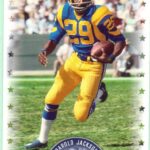Is it Time to Like Brett Favre Again?

Brett Favre told Sports Illustrated that he could still play in the NFL.
I don’t know if you’ve had the same reaction, but for at least the last five years (and probably for all seven years since he left the Green Bay Packers) every time I see Brett Favre in a commercial or hear his name mentioned in any context, I do an internal eye roll and automatically tune out the discussion.
Earlier this month when the cover of Sports Illustrated showed a grinning Favre and promised insight into whether he thinks he could still play (of course he does), I had to set the magazine aside as just the thought of Favre returning to the NFL gave me a twitch.
That someone who was so beloved and enjoyed by football fans for over a decade somehow became the crazy uncle that no one wants to acknowledge or discuss is really one of the strange stories of the recent NFL.
There is little dispute that Favre was one of the quintessential players of the NFL from the early 1990s through the late 2000s. Even if you were not a Green Bay Packer fan, you knew about Favre and dazzled in his exuberance and talent.
He was the gunslinger who occasionally shot himself in the foot, but more often put the bullet directly in the heart of his opponents. He won a Super Bowl as a 28-year-old and very nearly made it back late in his career with both the Packers and later the Minnesota Vikings.
However, for many football fans, it was his inability to exit gracefully that is still remembered and is the reason he often is omitted from lists of the top quarterbacks in NFL history.
Though he had hinted at retirement a year earlier, it was not until March 4, 2008, just weeks after Favre had thrown an overtime interception that helped the New York Giants defeat the Packers in the NFC Championship Game, that Favre announced his retirement.
Had Favre’s story ended there with a tearful goodbye and a career full of Packer memories, his place in history would certainly have been secure.
However, as is well documented, Favre spent the next three seasons turning the idea of retirement into a national joke.
Just three months after retiring, he told the Packers he wanted to come back. That led to a heated battle that burned many bridges between the quarterback and the team he had led for 16 years. The Packers had committed themselves to Aaron Rodgers (which turned out to be a pretty good decision) and hoped Favre would honor his decision to retire (they even offered him a $25 million marketing agreement to walk away).
Favre was clear that he was no longer interested in retiring and wanted to return to the NFL. If the Packers were not going to give him the starting quarterback job back, then he wanted them to release him so he could sign with any team. Rumors were swirling that he wanted to play for the division rival Vikings both because of their head coach (Brad Childress) and because they played the Packers twice during the season.
Green Bay’s management was adamant that they were going to do what was best for the organization and letting their long-time quarterback leave for a division rival clearly didn’t fit that bill.
Eventually, Favre landed with the New York Jets and for much of the 2008 season was displaying his previous magic. The team started the season 8-3, but Favre suffered a shoulder injury during the 11th game (though it was not reported until after the season) and the Jets missed the playoffs after losing four of their final five games.
It was during this season that Favre’s reputation started to tarnish. The revelation about his injury and seemingly his determination to continue his consecutive games started streak (it would eventually reach 297 games) at the detriment of the team made him seem selfish.
In addition, he was part of an investigation into “sexting” and leaving improper voice messages with a New York Jets GameDay hostess.
In April 2009, Favre told the Jets he was done playing. Several weeks later they officially released him, which allowed him to pursue his NFL career with any team.
In hindsight, it seemed clear to most everyone that Favre at that point was not intending to retire, but deceiving the Jets into releasing him gave him the ability to go where he wanted.
After an excruciating period in which the sports news was inundated with stories of “would he or won’t he play” Favre finally signed with the Vikings on August 18, 2009.
The 2009 season was a re-birth for Favre as he enjoyed his finest campaign in many years. Interestingly, after having thrown at least 13 interceptions every year he was a starter and as many as 29 in a season, Favre suddenly figured out how to make things happen without forcing the ball. He tossed 33 touchdown passes (his most since 1997) and threw only seven interceptions while leading the Vikings to a 12-4 record.
He continued to burn his Green Bay bridges by making disparaging comments about his replacement Aaron Rodgers and seemingly taking great joy in tossing seven touchdowns (without an interception) in two victories over the Packers.
The Vikings reached the NFC Championship Game and it looked like Favre would finally return to the Super Bowl.
With the game tied at 28-28 in the final seconds, Favre had the Vikings in range to kick the winning field goal. However, “Gunslinger Brett” returned for just one moment at the worst possible time. The ball had been on the 33-yard line (meaning it would be a 48-yard field goal attempt). But after a Minnesota penalty moved the ball back to the 38, instead of running the ball to set up the field goal, Favre went for a pass and it was intercepted by the Saints.
Drew Brees and the Saints drove down the field for the winning field goal in overtime without Favre and the Vikings having a chance at the ball (one of the reasons for the change in the overtime rules the next year).
After having been so close to another Super Bowl, few believed that Favre would hang it up. He tried to keep the story going through the offseason repeatedly saying that an ankle injury suffered during the playoffs was not responding and he was retiring.
In July of 2010 he told the Vikings he was retiring, but just two weeks later after well publicized pleas from several of his teammates was back in uniform.
The 2010 season proved to be a bitter disappointment for Favre and the Vikings. He reached milestones with his 500th touchdown pass and 70,000th yard, but the Vikings finished the season 6-10 and missed the playoffs.
Favre suffered a shoulder injury in an early December game against the Bills and was unable to play the following week, ending his streak of consecutive starts at 297. He returned two weeks later, but suffered a concussion on what would be his final play in the NFL. He did not play in the final regular season game and officially retired in January 2011.
Perhaps making the season even worse for Favre was the campaign enjoyed by Rodgers and the Packers. Green Bay defeated Minnesota twice, including a 31-3 shellacking, and went on to win the Super Bowl.
Of course, Favre just couldn’t help put his foot in his mouth as months after the Super Bowl he criticized Rodgers for having taken three years to reach and win the Super Bowl saying he had left the young quarterback with a Super Bowl ready roster in 2008.
It wasn’t until Favre didn’t report to an NFL team in August 2011 that most people realized that he was really retired.
Because of the antics over the three previous years, I think instead of feeling appreciative of Favre, most fans were just happy he was gone.
When a report came out in 2013 that the St. Louis Rams had seriously tried to get Favre to return to the NFL (fortunately he declined) you could just hear the collective groan.
So that brings us to 2015, nearly five years after his retirement and seven years removed from his departure from Green Bay.
While Favre does say in the Sports Illustrated article that he thinks he could still play, he doesn’t ignore the physical toll that football has taken on his body. He has reportedly already started to suffer at least some memory decline and the 20 years of pounding on his body will just continue to impact his quality of life over time.
The bitter relationship between him and the Packers seems to be softening. He is being inducted into the Green Bay Packers Hall of Fame this weekend and next year will certainly be honored with induction into the Pro Football Hall of Fame.
Favre’s total of 508 career touchdown passes was eclipsed by Peyton Manning in 2014 and Manning should move ahead of Favre on the yardage list early in the 2015 season. However, he will always be statistically among the top quarterbacks of all-time.
Where he rates on the all-time quarterback list is, however, certainly debatable. His statistics and durability are legendary, but his missteps in the clutch certainly played a role in him playing in only two Super Bowls and winning once.
Regardless of where he may be on your all-time quarterback list, it does again seem to be okay to celebrate his great moments and remember Brett Favre as a Packer and NFL legend.




















